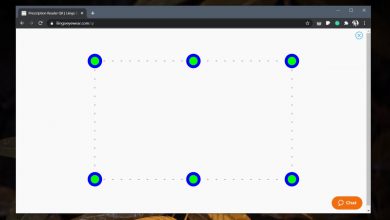Connected Home Project on IP: all about this project

Today there are many devices that we have connected to the network. We have a wide range of possibilities with many different teams that serve to make our daily lives easier. We no longer just use the computer to browse, but we have a great variety at our disposal. Internet of Things devices are increasingly present in our homes. For this to be possible, it is necessary to have adequate wireless networks. In this article we will explain what is Project Connected Home Over IP .
More and more IoT devices
The number of IoT devices keeps increasing . These are all of these computers that we have at home connected to the network. For example, we are talking about televisions, light bulbs, video players… There are many options and we have more and more of them at our disposal.
All of this leads manufacturers to seek a way to create protocols and technologies more in line with the real needs of users. The networks wireless in particular, Wi-Fi networks , have undergone a major change in recent times. Nowadays, they are more stable, the coverage is better and also the speed.
Project Connected Home Over IP is nothing more than a project that seeks to move forward in this direction. The objective is to ensure that the equipment connected to the network of our house is better prepared. It is a standard that seeks to unify the connections of IoT devices in our home.

What is Project Connected Home Over IP
When we talk about Project Connected Home Over IP, we are referring to a unification protocol in which several companies have worked around the world. It is a way to homogenize the connections of IoT devices in our homes for better performance.
Companies like Apple, Google or Amazon worked on this project . The problem today is that when buying an IoT device, we can find different options. We have several protocols that work on similar products. This can lead to compatibility issues and ultimately a negative rating for users.
What they're looking for with Project Connected Home Over IP is to avoid that. The aim is to standardize these standards. Of course, each standard can have its advantages and disadvantages, as one can imagine. One example is ZigBee and Wi-Fi devices, which although both operate on the 2,4 GHz spectrum, cannot work in combination.
Today most IoT devices allow only one standard. This means that they can be compatible with ZigBee or Wi-Fi, but not both. We could also have a bulb that supports Bluetooth but not Wi-Fi, for example. In case the manufacturers want to make their products more compatible, they will have to add additional hardware which means additional cost.
Beyond that, each standard can have its own vulnerabilities and flaws. It's here that Project Connected Home Over IP intervenes , which seeks to create a unified protocol for all IoT devices. It is not intended to replace Wi-Fi, Bluetooth or ZigBee; what he wants is to take the best of everyone to create a unified protocol.
It is mainly based on the internet protocol (IP), which has been around for many years. The idea is to unify a standard. This is something that will help IoT devices to be more compatible and also that manufacturers need less resources to run their equipment properly.
If all computers were using the same IP standard, there would have fewer compatibility issues. A device would not need to have so many standards or protocols to function properly and be compatible with others.
In short, summing up everything we have mentioned, the goal of Project Connected Home Over IP is none other than to allow users to easily acquire any IoT device compatible with other equipment.




